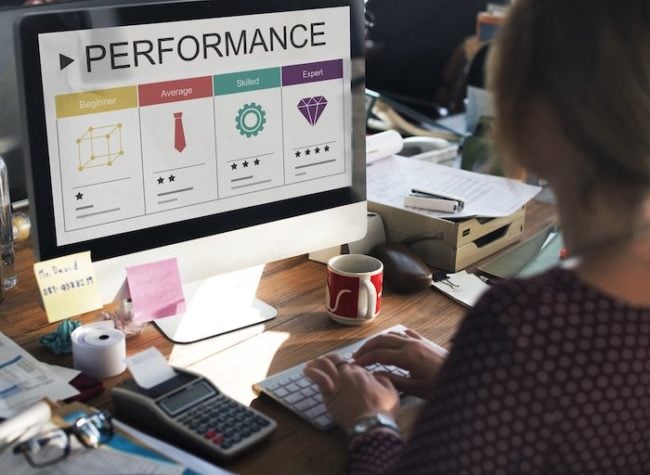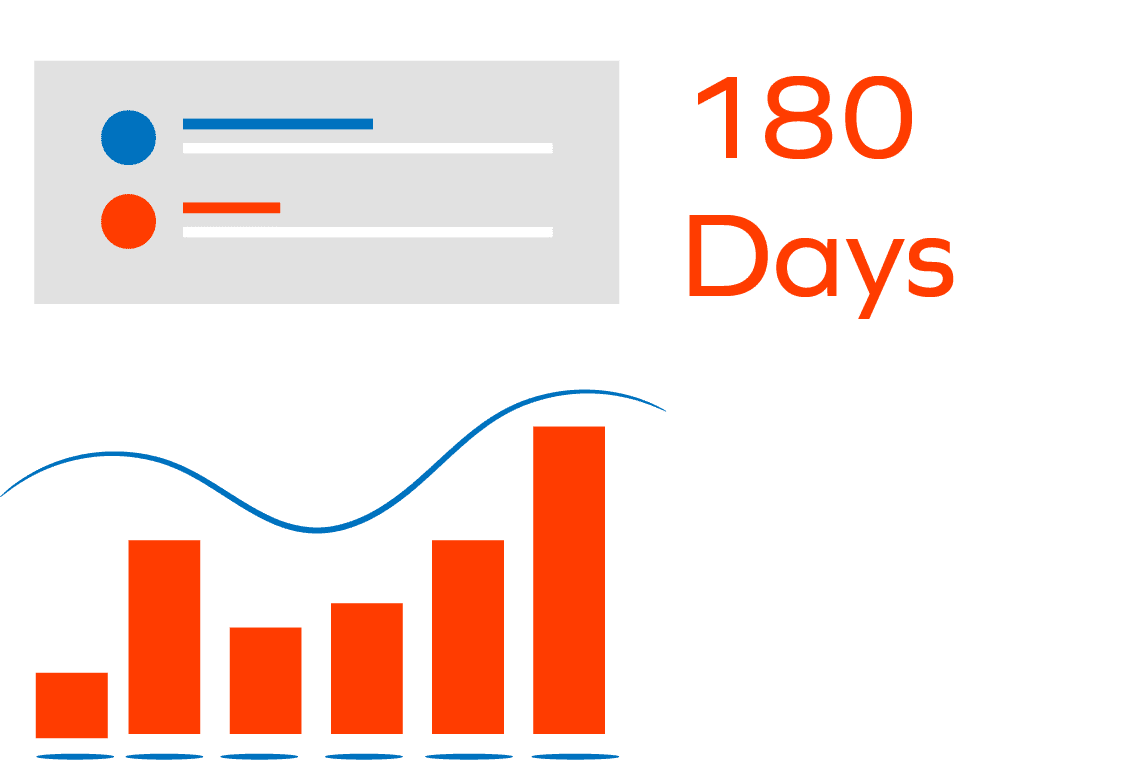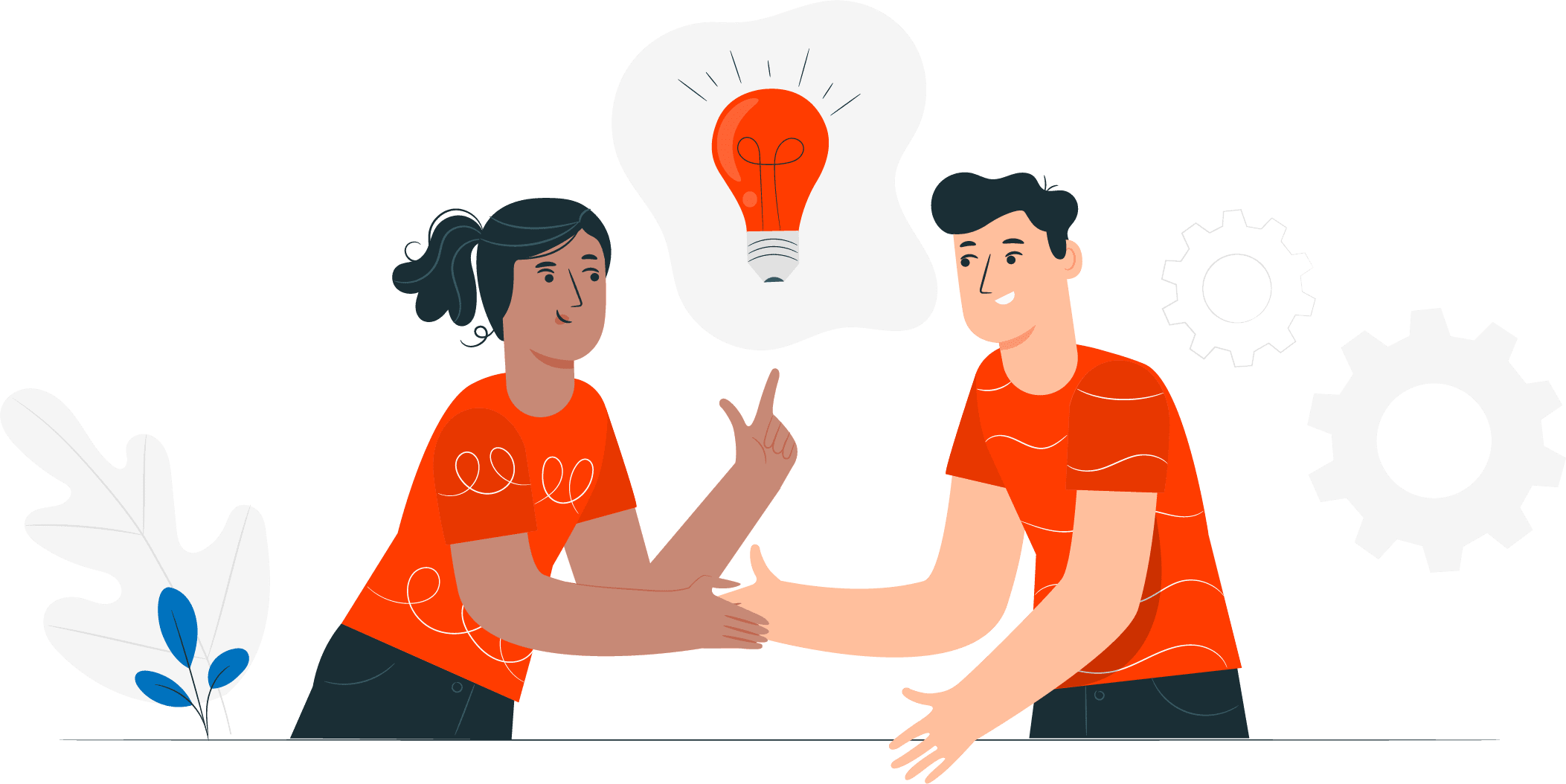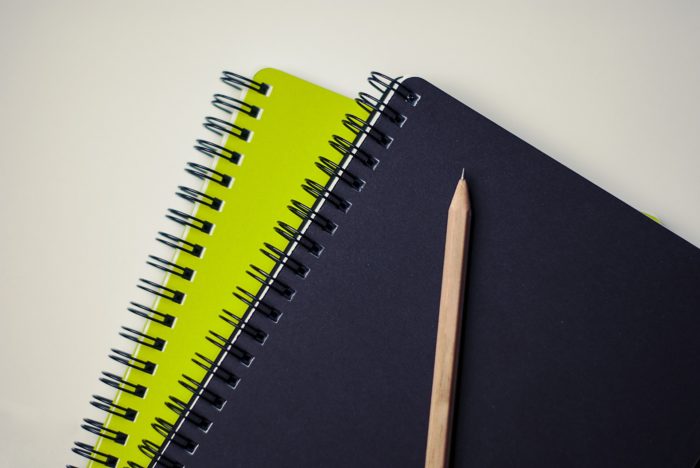For many years, annual performance reviews have been the standard procedure for assessing worker performance. Managers assess an entire year’s work in a single meeting, leaving little room for continuous improvement.
However, today real-time feedback technologies are expeditiously replacing this conventional method. The inadequacies of the previous approach are shown by the fact that only 2 out of 10 employees strongly feel that their performance is handled in a way that inspires them to accomplish exceptional jobs.
The importance of continuous performance assessments is rising for modern businesses. This method of encouraging input takes care of issues as they come up. Continue reading to see why the future belongs to real-time performance assessments.
What Is a Performance Review?
A performance review is a process where a manager and employee discuss the employee’s work and achievements over a set period, typically once a year. These evaluations, which offer a formal means of evaluating performance and offering criticism, have become an integral element of business operations.
Managers typically use these annual evaluations to determine whether employees should be promoted, adjust pay, and identify areas for improvement. It may surprise you to hear that most managers spend roughly 210 hours a year preparing their teams’ yearly performance reports.
Although the typical performance review provides an organized means of monitoring advancement, it frequently fails to take into account current obstacles or successes. This kind of inert approach may result in delayed feedback, which can lower staff morale.
Continuous performance reviews offer more rapid and useful feedback; therefore, transitioning from annual to continuous performance reviews is important.
The Limitations of Traditional Annual Performance Reviews
Annual performance reviews have been a part of business culture for a while, but their advantages are dwindling.
Here’s the reason behind this:
1. Outdated Feedback
By the time of the annual review, the input may not be relevant. Employees may experience a range of problems and changes throughout the year that aren’t typically addressed in an annual meeting. Staff members may become frustrated and feel cut off from management as a result of these delays.
2. Lack of Employee Engagement
Conventional annual evaluations may come across as a checkbox exercise instead of a sincere conversation. Employee disengagement may occur if they see the procedure as a formality rather than an opportunity for growth.
3. Inability to Handle Ongoing Issues
Annual assessments usually concentrate more on previous performance than on dealing with present problems. Due to the delay in input, problems could continue if they are not addressed in a timely manner, which would eventually impact team dynamics.
Many companies are giving up on this business model. For instance, Deloitte redesigned its performance management systems in 2015 and eliminated cascade targets, yearly assessments, and 360-degree feedback tools in an effort to promote a more flexible approach. In a similar spirit, Adobe has also included a continuous feedback system.
Do Most Companies Still Host an Annual Performance Review?
It may surprise you to hear that many businesses continue to use the annual performance review model, even with all the noise about doing away with traditional reviews.
In fact, nearly half (49%) of companies conduct annual or semiannual reviews, according to a recent study that surveyed 1,000 full-time U.S. employees.
The great part is that an increasing number of firms are changing course and accepting ongoing input. This is becoming quite popular! Why? Real-time feedback facilitates the recognition of accomplishments and prompt resolution of difficulties, hence establishing an open and adaptable work environment.
As companies maneuver through the rapid changes in today’s environment, having continuous performance discussions is starting to become standard practice. Annual reviews may still be necessary, but it appears that more regular, fruitful conversations that empower employees will be key in the future.
The Rise of Continuous Performance Reviews
As noted by McKinsey & Company, Annual reviews can create a bottleneck on managers and the C-suite. More regular performance conversations can be successful in a variety of formats; quarterly, weekly, and casual check-ins should supplement formal reviews.
Today, employee assessments are being approached differently by firms thanks to continuous performance reviews. In contrast to traditional techniques, which usually entail an annual assessment, continuous reviews place an emphasis on regular check-ins and continual feedback all year long.
Annual vs. Continuous Performance Reviews: Key Differences
| Aspect | Annual Performance Review | Continuous Performance Review |
| Frequency | Annual or semiannual | Ongoing |
| Feedback Timing | Retroactive | Real-time |
| Focus | Past performance | Current performance and growth |
| Preparation | Time-consuming, annual prep | Minimal prep, spontaneous |
| Employee Involvement | Passive, top-down process | Active participation, collaborative |
Constant assessments, real-time feedback, and frequent check-ins are becoming common practices as a result of the continuous performance review system. Large corporations like Microsoft, Adobe, and Deloitte have successfully implemented ongoing performance assessments to boost worker engagement and productivity.
How Continuous Reviews Improve Employee Engagement and Growth?
Here’s a snapshot of how continuous performance reviews can significantly enhance employee engagement and foster professional growth:
1. Career Development
Real-time performance reviews are changing the workplace for employees. They bring in numerous benefits that enhance the overall experience of employees. One key advantage is career development due to continuous learning based on continuous feedback. When feedback is delivered weekly, employees find it much more meaningful—over five times more so!
2. Increased Productivity and Employee Engagement
Another important advantage is engagement. Employees who feel engaged are four times more likely to have received feedback within the last week than those who haven’t. It’s evident that giving employees regular feedback helps them stay engaged and committed to their task.
Indeed, over 50% of the workers say they would want to receive feedback on a daily or weekly basis, and almost 75% think it is very important for their productivity.
3. Motivation and Overall Job Satisfaction
The perception that employees have about their jobs significantly changes when they receive feedback in real-time. When they get recognized and supported right away, it creates a more positive and stimulating work environment.
It should come as no surprise that 94% of workers would like to receive real-time feedback and opportunities for career development rather than waiting for the customary formal appraisals.
Impact of Continuous Reviews on Organizational Performance
A 2020 study found that companies that used constant feedback beat their rivals by 24%. This improvement is primarily the result of employees’ ability to move fast on timely information and make improvements.
Additionally, firms that prioritize continuous feedback outperform those that use traditional review procedures in terms of attracting talent and employee retention by 39% and 44%, respectively (cited above).
The advantages also extend to employee development, since real-time reviews encourage continuous dialogue about personal development and match personal goals with company objectives.
It also leads to an improvement in retention rate, which leads to a more stable staff and lower recruitment expenses.
Technology’s Role in Facilitating Continuous Performance Reviews
Technology is essential in today’s hectic work environment because it facilitates ongoing performance reviews. With the correct tools, organizations can improve employee engagement and expedite feedback processes.
Here’s how technology makes this possible:
Real-Time Feedback Platforms
Tools like performance management software enable managers and employees to share feedback instantly. This means that input is immediate and relevant, cultivating a culture of continuous improvement.
Automated Check-Ins
Performance management systems have calendar connections and reminders, which make it simple to schedule routine check-ins. This is to make sure that current discussions don’t get lost in the shuffle.
Data Analytics
Organizations may track employee performance patterns over time with the use of performance management tools, which offer insightful data. Managers can thus identify areas of improvement and recognize high performers.
What Are Common Goals for Performance Reviews?
Here are some common goals for performance reviews:
1. Aligning Individual Goals with Company Objectives
Performance reviews should align individual goals with the company’s broader objectives so that employees’ work can support organizational priorities.
2. Improving Employee Skills
Performance reviews must help employees identify areas for growth and offer opportunities for targeted development.
3. Recognizing and Rewarding Achievements
Performance reviews must highlight employee accomplishments to reinforce positive behaviors and boost morale.
4. Setting Future Objectives
Performance reviews should be an anticipatory tool that enables managers and staff to set targets for the upcoming review cycle.
When compared to regular annual evaluations, continuous performance reviews greatly improve the achievement of important corporate goals.
They facilitate the alignment of individual goals with company objectives by allowing real-time adjustments, ensuring that employees’ objectives reflect the company’s evolving priorities.
Additionally, regular feedback encourages honest dialogue between employees and managers, which in turn builds trust and teamwork. This constant conversation makes providing feedback seem like a normal aspect of working.
Lastly, because ongoing reviews are collaborative in nature, dynamic goal-setting is made possible, allowing for necessary adjustments to match individual goals with company objectives.
How Can Annual Performance Reviews Be Converted to Ongoing Performance Reviews?
You might find switching from yearly to continuous performance assessments a bit overwhelming but it is doable with the appropriate strategy.
Here are some key steps for managing this shift for HR teams and managers:
Step 1: Offer Education and Training for Managers
Managers are the ones who are in charge of providing feedback to the employees. Thus, as an organization, you must always begin by instructing managers on the proper method of offering continuous feedback.
Urge them to think more in the direction of continual conversations rather than just annual evaluations. Consequently, establishing an ecosystem of frequent communication that assists managers in giving insightful, timely, and constructive feedback.
Step 2: Invest in the Right Tools and Software
You must provide your employees with the performance management resources they need to make continuous reviews easier. Choose performance-managing software that facilitates goal tracking, progress monitoring, as well as real-time feedback.
Performance management tools by Engagedly help HRs and managers to easily give and receive feedback, monitor progress in real-time, and more.
Step 3: Set Up Feedback Loops with Periodic Check-Ins
As a next step, you must establish a regular check-in schedule, whether it be weekly, biweekly, or monthly. As a result, receiving feedback becomes normal and expected at work, thereby stimulating candid discussions about accomplishments, difficulties faced, and performance.
To make feedback facilitation a norm at your workplace, you have to establish a minimum frequency for these touchpoints. During these sessions, pay attention to personal growth and possible obstacles that employees may face
Step 4: Encourage Employee Self-Assessments and Peer Reviews
At last, empower employees by encouraging self-assessments and peer feedback. This promotes accountability and self-reflection, giving employees a more active role in their development and creating a collaborative team environment.
To do so, you can use peer feedback tools, such as 360-degree reviews, to let employees offer and obtain feedback from one another.
To Wrap Up
In a quest to keep up with the needs of businesses and improve productivity, it’s critical to shift from annual performance evaluations to ongoing reviews. A continuous feedback approach facilitates open discussions that lead to continuous growth and development opportunities.
By adopting this method, which encourages dialogue and quick identification of skill gaps, organizations can guarantee an alignment between individual goals and company objectives while improving communication between staff members and managers.
Ultimately, this shift can improve performance levels and overall job satisfaction across the organization.
Performance management tools by Engagedly boost this shift with features like ongoing feedback and frequent check-ins. This way, employees receive timely, relevant feedback that enables them to make real-time improvements and adjustments
To find out more, schedule a demo now!
FAQs
1. Are continuous performance reviews time-consuming for managers?
While they require more frequent check-ins, continuous performance reviews are often shorter and more focused, saving time in the long run by addressing issues promptly and preventing larger problems.
2. How frequently should performance reviews be done in real-time?
While real-time performance feedback is usually provided as needed, traditional reviews take place once a year. This can happen at the end of a project, at monthly check-ins, or whenever significant progress is made, or an area needs attention.
3. How do continuous performance reviews affect employee retention?
Continuous feedback increases retention by making employees feel valued and supported in their development. Regular check-ins help improve engagement and strengthen employees’ connections to the company.

























